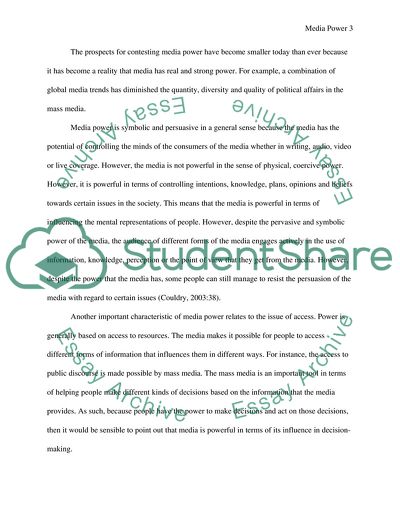Cite this document
(The Fundamental Characteristics of Media Power and Its Relationship to Other Forms of Power Literature review Example | Topics and Well Written Essays - 2000 words, n.d.)
The Fundamental Characteristics of Media Power and Its Relationship to Other Forms of Power Literature review Example | Topics and Well Written Essays - 2000 words. https://studentshare.org/media/1852443-intellectual-foundations-of-social-theory
The Fundamental Characteristics of Media Power and Its Relationship to Other Forms of Power Literature review Example | Topics and Well Written Essays - 2000 words. https://studentshare.org/media/1852443-intellectual-foundations-of-social-theory
(The Fundamental Characteristics of Media Power and Its Relationship to Other Forms of Power Literature Review Example | Topics and Well Written Essays - 2000 Words)
The Fundamental Characteristics of Media Power and Its Relationship to Other Forms of Power Literature Review Example | Topics and Well Written Essays - 2000 Words. https://studentshare.org/media/1852443-intellectual-foundations-of-social-theory.
The Fundamental Characteristics of Media Power and Its Relationship to Other Forms of Power Literature Review Example | Topics and Well Written Essays - 2000 Words. https://studentshare.org/media/1852443-intellectual-foundations-of-social-theory.
“The Fundamental Characteristics of Media Power and Its Relationship to Other Forms of Power Literature Review Example | Topics and Well Written Essays - 2000 Words”. https://studentshare.org/media/1852443-intellectual-foundations-of-social-theory.


